What comes to mind when you hear the word ‘Tsukudani’? Like dried seaweed tsukudani on freshly cooked white rice or seaweed tsukudani in rice balls, it’s best accompanied with rice and sake. Tsukudani is a Japanese traditional food wherein fish, shellfish, seaweed, vegetables or even meat cooked in soy sauce base, and it has a sweet and salty taste. Its name comes from its origins in Tsukuda Island in the Edo period (current day Chuo-ku, Tokyo).
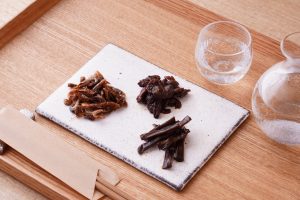
During the Edo period, the small island of Tsukuda was a suitable area for fishing in Edomae. Tsukudani was valued as a preserved food, spread among the common folk. At the time, the Tokugawa shogunate held an annual event called the Sankin-Kotai. Local samurai were expected to travel to Edo to show their loyalty to the Shogunate. When they returned home, they would bring back tsukudani with them as a souvenir from Edo. As such, tsukudani became popular all over the country.
The history of Shinbashi Tamakiya dates back to 1782 in the Edo period. Shichibei of the Echigo Province, commonly known as Tamaki Village, set up a small shop in Edo Katakawa town (now Shinbashi) and named it ‘Tamakiya’ after his hometown. At the time the main delicacy passed down through family generations consisted mainly of simmered zazen beans but during the third generation of Shichibei a new recipe began to be passed down from generation to generation, the secret sauce to accompany tsukudani dishes. The ‘Edo Tsukudani’ contains the perfect marriage of taste, aroma and texture. Thereafter, Shinbashi Tamakiya’s tsukudani spread throughout the country due to Sankin Kotai.
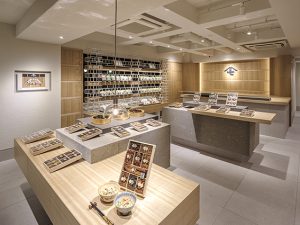
Fast forward to now, the Shinbashi Tamaki store moved following the closure of the original store in 2022. At the time, a three-seater eating and drinking counter filled one corner of the store. From November 2022, they started to offer “Tsukudani cuisine and wine pairing course (¥6,980)”. From June 2023, the “Onigiri Workshop in Tamakiya (¥5,250)” is also available.
Ms. Kyoko Tamaki, the 10th generation president, embarked on this project. “There are many customers who eat tsukudani at their table on a regular basis, and they visit the store frequently. I want to convey the appeal of tsukudani towards a new customer base who won’t normally come across it.”
It is with this in mind that they began to mix tsukudani into western-styled dishes, mixing international styles such as Italian and French and adding it to a wine pairing course.
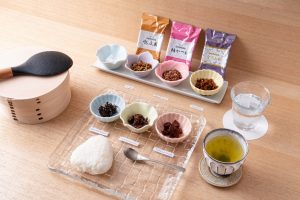
On the other hand, the ‘Onigiri workshop in Tamakiya’ aims to capture the new market of foreign tourists and foreign residents in Japan. Recently, onigiri made a comeback on the world stage of cuisine. Onigiri often appear in Japanese anime, it gained popularity as a quick, cute and healthy snack with its triangular shape. In this workshop, customers can make their own original unique onigiri whether triangular or round using tamakiya’s specialty tsukudani and furikake seasonings. Customers are invited to join in shouting ‘toss and squeeze!’ eat at the shop or take their creations home (however, for sanitary reasons, customers will not be permitted to take their food home during the summer).
At the end of the event, a “Tamakiya Onigiri Master Certificate” will be issued, and customers are invited to wear a happi coat with the shop’s logo, wrap a colorful twisted headband, and take a commemorative photo with the certificate. There is also a fun face mask panel that allows customers to transform into a samurai or maiko, perfect to post on social media platforms after the experience. It will be a unique memory during your trip to Japan.
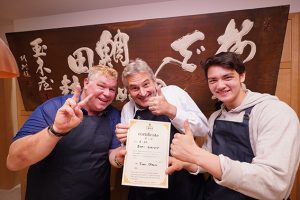
ONIGIRI Work shop in TAMAKIYA
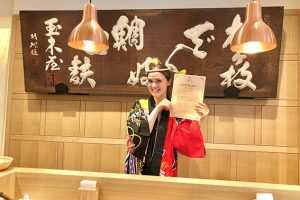
Take a photo wearing a headband and a happi coat.
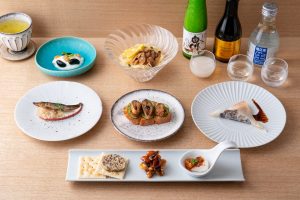
Japanese sake pairing also available
Allow us to introduce the pairing course (¥6,980 Summer menu) made from traditional Japanese food, tsukudani in a western-styled meal. This wine pairing course, limited to 3 customers a day, includes 8 dishes and 3 types of wine, also you can get recipes of all dishes. They are made with tsukudani that has been carefully simmered for hours, it does not take long to prepare and there are many menus which can be made in a quick 2 to 3 steps. If you purchase tsukudani at the store, feel free to take it home and try out the wide variety of possible recipes.
It is also possible to choose not just wine to pair your meal but also Japanese sake (3 types provided). At the dining counter, there will also be a set of 3 appetizers and wine available (¥2,420) and a set of tsukudani and sake (¥1,320), so it’s perfect for a quick drink.
This pairing course summer menu is offered from the 22nd of May 2023.
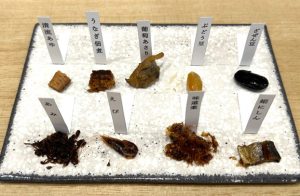
In this course, the first thing brought to the counter will be a small sample of the original tsukudani and boiled beans used in the course. Customers are invited to explore the original taste of these ingredients and compare them with the new taste brought about by the combination with other ingredients.
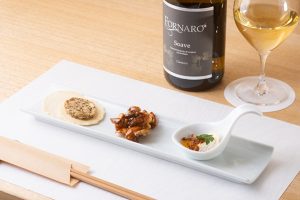
3 kinds of appetizer
Caramelized Shrimp Tsukudani & Nuts
A combination of shrimp tsukudani, caramelized garam masala-flavor, and nuts. The garam masala adds a good kick in scent.
Camembert Cheese with Semi-dried Bonito Condiment and Apricot Jam
The taste of tsukudani and apricot jam placed on camembert. The sweet and sour taste of the jam and the mellowness of the cheese create a good texture.
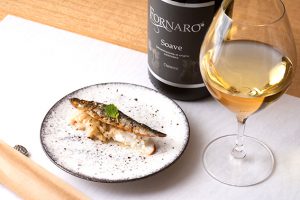
Small Herring Tsukudani Scandinavian Style
Herring boiled in soy with sauerkraut and sour cream. The acidity of the sauerkraut and sour cream harmonizes with the spiciness of the herring boiled in soy. The texture of this dish is distinctive.
[Pairing] Fornaro Soave Classico
Made in Veneto, Italy. Soave, 100% Garganega variety. It’s beautiful straw-colored appearance is mixed with its balanced taste, fruitiness and delicacy. Feel the soft and precise minerals instead of the harsh minerals of the volcanic soil. It goes very well with the freshness of apples in cooking and the acidity of apricot jam.
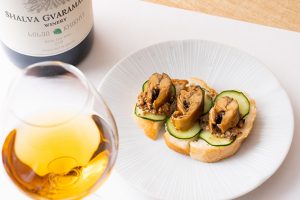
Ayu (Sweetfish) and Cucumber Tartine
Whole boiled sweetfish is cut into canapé style. The secret flavor exists when the ayu head and tail are finely crushed and mixed with mustard. The sweetfish is simmered for five hours after being grilled, so even a small amount packs a strong flavor.
。
[Pairing] SHALVA GVARAMADZE KHIKHVI
Straight from Georgia. This wine boasts a beautiful bright amber color. Aromas of dried apricots, oranges, walnuts, honey, ginger and green pepper spread out and are somewhat complex. The rich orange wine matches the flavor of sweetfish. It goes well with the cappellini served two dishes later, so it is best to keep this drink for a bit without drinking.
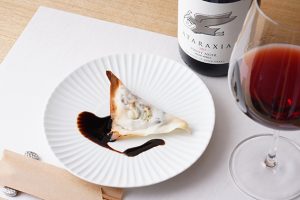
Eel Tsukudani Agrodolce
Fruits, chocolate and balsamic vinegar are added to the eel tsukudani, inside the skin of the spring roll. This is a dish geared to surprise. Bitter chocolate rich in cacao, sweetness of blueberries and kiwi, spiciness of eel, and sourness of balsamic vinegar create a good harmony.
[Pairing] Ataraxia Pinot Noir 2017
Made in South Africa. A Walker Bay featured brewer that expresses the charm of the terroir. Pinot Noir with a well-structured body and transparent acidity. Good compatibility with balsamic sauce.
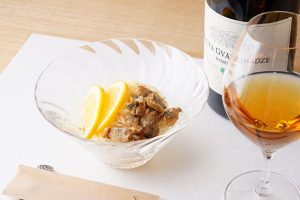
Sicilian Style Capellini with Asari Clam and Japanese Pepper
Cooked clams seasoned with sansho (Japanese pepper) into a pasta dish. This dish uses large grape sansho pepper from Arita-cho, Wakayama Prefecture. Tamakiya’s popular product, “Special Grape Clams,” is made by simmering flavorful grape sansho, which has been cultivated since the Edo period as herbal medicines and condiments for various dishes, and seafood. Add lemon and salt to grape clams for a refreshing taste.
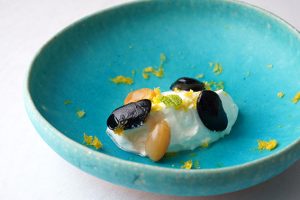
Beans and Yogurt Chantilly with Orange Flavor
A dessert made with zazen beans (black beans) and grape beans (soybeans) on yogurt. The gentle sweetness of boiled beans and the sourness of yogurt are exquisite.
In addition to the pairing course, Shinbashi Tamakiya also offers rice ball sets (¥638~), kaiseki chazuke sets (¥880~), and sweets (¥880). Reservations can be made by phone or online from the URL listed at the end of the article.
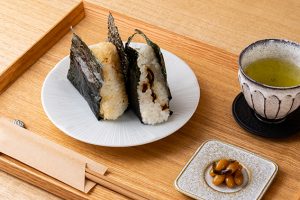
Onigiri Set
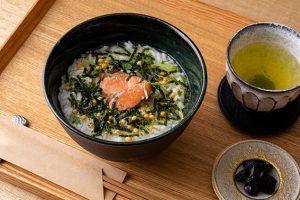
Kaiseki Chazuke Set
Shinbashi Tamakiya’s tsukudani and boiled beans do not use any chemical seasonings or additives, and have kept the same manufacturing method since the Edo period. The thing about tsukudani is that it doesn’t have an offensive taste and even when it is prepared in Western style, it can be harmonized with any ingredient. All products are produced in our own factory in Japan and sold in-house, ensuring consistent quality control. It has been 240 years since the shop was founded, and because of the secret sauce found only here, this one-of-a-kind richness and taste cannot be found anywhere else.
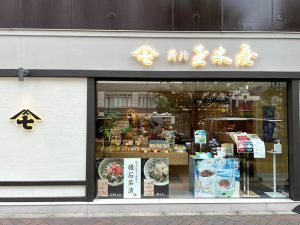
[Information] Store name: Shinbashi Tamakiya (Shinbashi main branch)
Address: 4-25-4 Shimbashi, Minato-ku, Tokyo
Access: 6 minutes from Shimbashi station Karasumori exit. 6 minutes from Exit 7 of Shiodome station on the Toei Oedo Line. 5 minutes from Yurikamome Shiodome station Exit 2A
Phone: 03-6450-1231
Number of seats: 3 seats (There is a food counter in one corner of the store)
Opening hours: Store: 10am-6pm Food counter: Mon-Fri 11am-6pm (LO 5:45pm)
Shinbashi Tamakiya official website https://www.tamakiya.co.jp/
Reservation required for pairing course https://www.tamakiya.co.jp/mariage.html#reserve
Onigiri workshop requires reservation (English) https://reserva.be/tamakiya

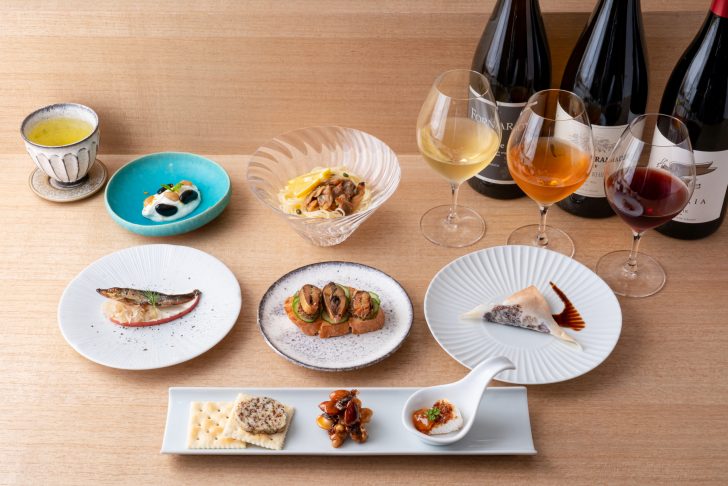




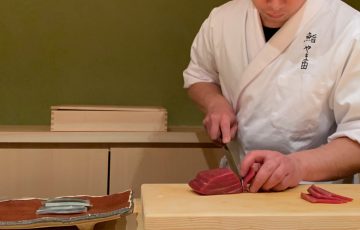

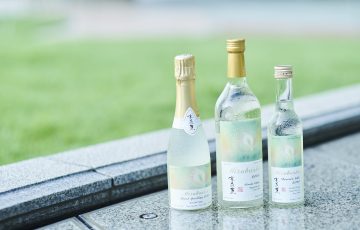
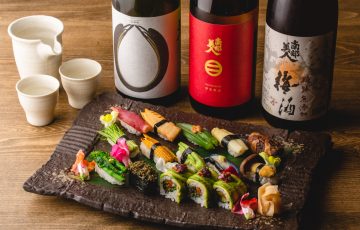
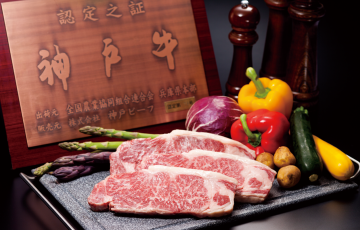




Recent Comments